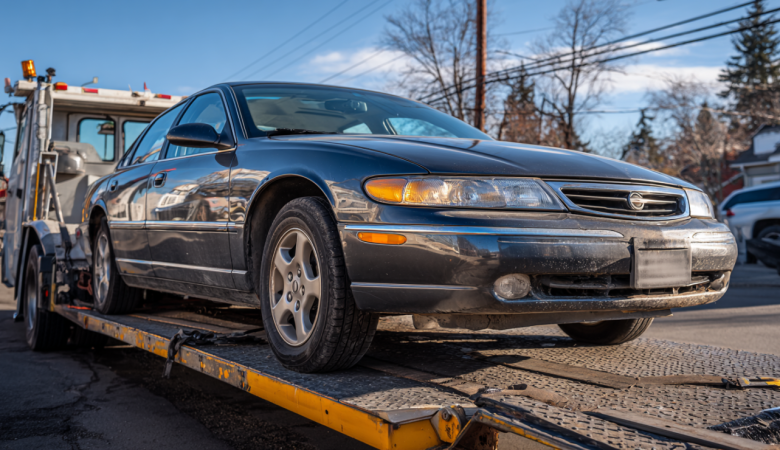Pickup trucks are everywhere in the U.S., and for good reason. They’re versatile, durable, and handle jobs most cars simply can’t. But what happens when you need to transport one a long distance? Driving might sound easy at first, but the reality isn’t always worth it. Fuel costs, hotel stays, and the added mileage on your truck can make a cross-country trip more expensive than expected. For that reason, many people choose professional auto transportation services.
This guide explains the process in plain terms: how to decide if you should ship a pickup truck, what the cost looks like, and what to expect at each stage.
Step 1: Decide if Shipping Makes Sense
Not everyone needs to ship a truck, but there are plenty of situations where it’s the smarter move. Maybe you’re relocating for work, buying a truck from an auction in another state, or selling yours to a buyer who lives far away. In all these cases, driving might not be realistic. Long trips take time, and piling thousands of miles onto your truck means extra wear and tear that can hurt resale value.
Hiring a service to transport a car keeps your schedule clear and helps protect your investment. For many owners, that’s more than enough reason to leave the job to a professional.
Step 2: Learn About the Cost of Shipping a Pickup Truck
Money is usually the first concern. The cost of shipping a pickup truck depends on a handful of things: distance, type of vehicle, transport methods, and even the season. People often ask, how do I get a pickup truck shipping cost? The best way is to collect car shipping quotes from different carriers. Most companies provide them for free, and comparing several gives you a fair idea of the market.
So, how much it takes to ship a pickup truck will change depending on these factors. Larger crew cab models are heavier and may cost more to move than smaller trucks. The time of year also plays a role; summer tends to be busier and more expensive, while off-season moves can be cheaper. Enclosed car shipping is more expensive but shields your truck from weather and road debris. Open car transport, the standard choice, is cheaper but exposes the vehicle to the elements.
Step 3: Compare Car Shipping Companies
Once you know roughly how much to ship a pickup truck, the next step is choosing who to trust with it. Car transportation services differ more than you might think. Some mostly handle sedans, while others have the right trailers and equipment for shipping a truck safely.
Look for a transport company for cars that explains its insurance coverages clearly and has good reviews. Established automobile shipping companies, for example, EasyHaul, should also outline what happens if a claim is needed.
Be cautious of unusually cheap rates. A low cost to ship a pickup truck can sometimes hide additional costs or delays. Some carriers may wait until their trailer is full before moving your vehicle, which pushes back delivery times.
Step 4: Select the Right Vehicle Shipping Service
After comparing automobile shipping companies, choose the vehicle shipping service that makes sense for your situation. If you’re shipping cars in the USA over a long distance, especially coast to coast, door-to-door services are often the most convenient. Having your truck picked up and dropped off at your address saves time, though in some cases the carrier may ask you to meet at nearby pickup and delivery locations if your street can’t handle a large hauler.
For shipping a pickup truck locally, things are usually quicker and less expensive. Delivery times are shorter, and you may have more flexibility in setting shipping dates.
Step 5: Prepare Your Truck for Transport
Getting your truck ready is a step you shouldn’t skip. Start by clearing out personal belongings. Carriers typically forbid them, and they aren’t included in insurance coverage anyway. Next, wash the vehicle so the driver can note any scratches, dents, or paint chips. Finally, take photos of the vehicle, review, and sign any necessary documents before shipping your vehicle.
Thinking about shipping a pickup truck bed with tools or other items inside? Most companies won’t allow it, and if they do, expect additional costs.
Step 6: Know What to Expect With Long-Distance Moves
Vehicle transport across a country works a little differently from short hauls. Shipping dates are harder to guarantee, and delivery times often run one to two weeks. A coast-to-coast move is especially affected by the time of year. Winter storms or heavy summer traffic can cause delays.
Many people ask, how much does it cost to ship a pickup truck across the U.S.? The answer depends on distance, but cross-country trips are naturally more expensive than regional ones. Still, car transportation cross-country saves you the trouble of several long days on the road.
Step 7: Ask the Right Questions
Before you finalize anything, take time to ask the carrier a few important questions. Begin with the obvious: how much would it cost to ship a pickup truck with your company? Make sure the figure matches the car shipping quotes you’ve already gathered.
Then ask about delivery times, shipping dates, and whether expedited service is available. Double-check the insurance coverages and whether they’re included or cost extra.
Some owners also wonder, can I ship a pickup truck by train? In certain regions, yes, but for most people, shipping services that use a car transporting truck are more practical. Trains often have limited pickup and drop-off points, making them less flexible.
Step 8: Drop-Off and Tracking
On the day your truck is picked up, the driver will inspect it and fill out a bill of lading. This document records the vehicle’s condition before shipping. Make sure you review it and keep a copy.
Some carriers also offer tracking during transit. This feature is especially helpful when you ship a car cross-country, since delivery times can change. Real-time updates give you a clearer idea of when to expect the truck.
Step 9: Inspect on Delivery
When the truck arrives, inspect it carefully before signing any paperwork. Compare its condition with the photos you took earlier. If you notice new scratches or dents, note them on the delivery sheet right away. That’s the only way to protect your right to file a claim later.
Once you’re satisfied, you can drive away knowing you managed to get a car transported without the long drive.
Step 10: Plan for the Future
Going through vehicle transportation once makes it easier the next time. Maybe you’ll buy another pickup at auction or sell yours to a buyer in another state. Whatever the case, working with automotive shipping services is less intimidating once you’ve done it before.
Quick Tips for Shipping a Pickup
- Gather at least three car shipping quotes before making a choice.
- Verify which insurance coverages are included.
- Remember that the cost of shipping depends on the distance and type of vehicle.
- Delivery times shift with the time of year.
- Open car transport is cheaper; enclosed car shipping offers more protection.
- Door-to-door services are worth it if convenience is your top priority.
- Remove personal belongings from the truck before shipping.
- Budget for additional costs if shipping dates change.
Final Thoughts
Arranging transport for a truck isn’t something people do every day, so it can feel overwhelming at first. But once you break it into steps, researching providers, requesting car shipping quotes, preparing your vehicle, and inspecting it at delivery, it becomes much easier.
Whether you’re shipping a pickup truck locally or arranging transport vehicle services across the country, the same principles apply: research carefully, ask the right questions, and keep good records. By doing so, you avoid unnecessary wear and tear, protect your investment, and save yourself from the grind of a long-distance drive.
The next time you ask yourself, how much would it cost to ship a pickup truck, you’ll already understand the main factors at play. With that knowledge, you can make a confident decision and trust that your truck will arrive safe and sound, wherever it needs to go.






Leave a Reply
You must be logged in to post a comment.